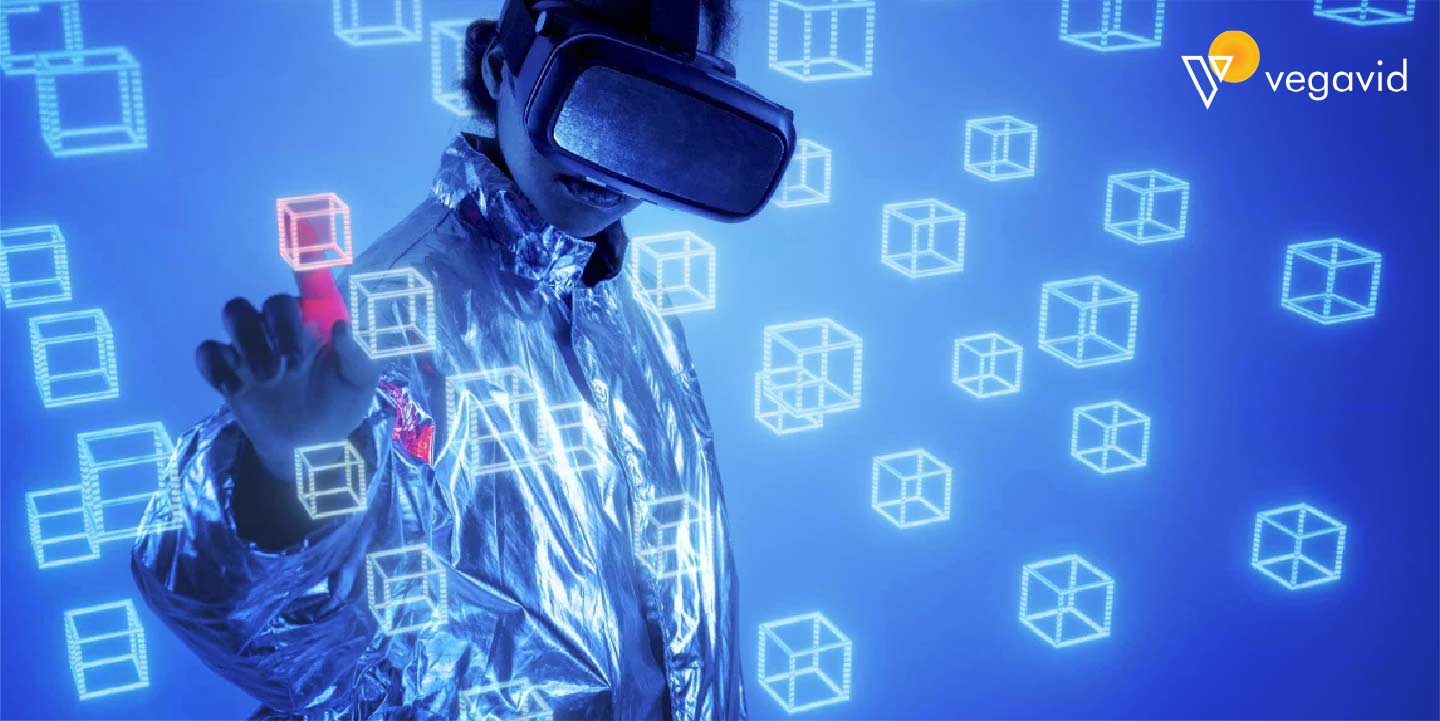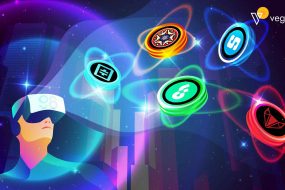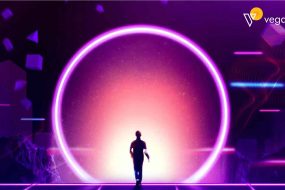
Virtual worlds depicting futuristic concepts like immersive shared metaverses have long captivated the imagination. Yet constructing functioning alternate digital realms presents monumental technical challenges. Decentraland has made strides towards this vision through leveraging novel blockchain technologies granting users ownership over their virtual interactions and possessions within a shared 3D environment. But complex interconnected infrastructure underlies the magical experiences encountered. This report aims to pull back the curtain and reveal the innovative architectural frameworks composing Decentraland’s metaverse and powering its rapidly evolving ecosystem. Exploring how this experimental technology is stitching together diverse, decentralized networks may hold keys for shaping advanced virtual platforms accessible to all.
Explanation Of Blockchain as The Underlying Technology
The underlying technology that enables Decentraland’s virtual environment is a distributed digital record known as a blockchain. At its core, a blockchain is like a ledger or log of transactions that is spread across many computers worldwide rather than stored in any single place. When users engage in activities like acquiring or trading a plot of virtual property, those actions get added to the blockchain in small pieces of data called blocks. Each new block contains a unique cryptographic signature linking it securely to the previous block in a continuous chain.
By having the blockchain distributed across several devices, there is no single point that could cause the whole system to stop working. Even if some devices disconnect or get issues, the records would still persist on honest remaining devices. This stability protects transactions from being changed once In Decentraland’s case, users provide deposits of their native tokens MANA to become participators working together to validate new transactions following a consensus protocol. This decentralization means no single party is solely in control of the network.
Additionally, behaviors between users are programmed using smart agreements. Smart agreements function like automatic contracts, carrying out transactions like land transfers between two agreeing users through transferring ownership across the blockchain after payment occurs without an intermediary overseeing.
Decentraland’s Virtual Reality Architecture
Inside the metaverse of Decentraland, users can navigate an expansive three-dimensional landscape filled with unique destinations and encounters. However, creating an extensive virtual world at scale presents substantial technological obstacles. Decentraland’s developers crafted an innovative architecture to smoothly render this VR setting for many concurrent visitors.
At the core is a partitioning approach that breaks the immense 3D terrain into smaller, more manageable plots. These plots act as individual instances managed by independent nodes. When users roam the landscape, their clients request information only for the small region currently within view rather than the immense whole. This decentralizes storage, avoids overload on central systems, and permits scaling to vast, persistent worlds.
Each plot further subdivides into modular spaces that can be combined like building blocks. Various programs piece these spatial blocks together dynamically to shape the environmental scenery. Individual block owners can customize their plots independent of neighbors. Users witness a harmonious hybrid world as block boundaries seamlessly blend during real-time VR.
Client software projecting this VR experience utilizes prevalent technologies like WebGL for 3D graphics rendering accessible through web browsers. But optimizations harness new capabilities like spatial clustering and multi-buffering to cleverly juke settings even on modest devices like smartphones. Behind the scenes, a coordination protocol synchronizes tangible actions and events among peers present together within the same vicinity.
Through the clever distribution of both the virtual world geography and its live rendering across independent nodes, Decentraland achieves immense scalability far surpassing centralized architectures. This permits the construction of its immersive, persistent VR setting accessible to innumerable worldwide users simultaneously inhabiting a Common interactive virtual world. Ongoing development continuously improves this achievement.
Digital Real Estate And Asset Management
Within Decentraland’s 3D environment, users can buy, sell, and own virtual plots of digital land. These parcels of blockchain-based property function much like real estate, generating value for landowners. The core distinctions are land here consists of coordinate positions on Decentraland’s map instead of physical locations, and transactions settle instantly through digital currency on the distributed ledger.
Owners can develop and customize their properties independent of neighbors. Common uses involve constructing virtual buildings and venues like shops, art galleries, casinos, and more. Creativity unleashes new opportunities when the only limits stem from technological possibilities instead of physical materials. Proficient builders even lease developed spaces to other entrepreneurs hoping to establish a business.
Additional digital items can be stored and linked to virtual land accounts as well. These possessions differ little from conventional online game inventories, except titles certify lifetime ownership instead of temporary access. As with any scarce asset, demand and creativity mold value judgments that property owners can benefit from through future sales. Already, some undeveloped districts have appreciated enormously as economic activity expands within Decentraland.
Smart contract utilities assist management by automating rental payments and verifying permits. This streamlines processes while discouraging disputes through transparent, open-source guidelines. Their digital native nature also removes typical physical property maintenance burdens like repairs, taxes, or decay. Value stems solely from perceptions within Decentraland’s artificial economy and user community.
As the user base and experience continue developing, digital holdings promise to retain or possibly increase value comparable to real-world investments. Only time will reveal the persistent implications of an infant virtual real estate system based upon blockchain infrastructure and growing parallel to ours in the digital dimension.
Interoperability And Open Standards
For a virtual world like Decentraland to remain open and accessible long-term, their architecture emphasizes tools supporting interconnection between different platforms. This follows the idea that individual applications should link with each other to form a universal Metaverse instead of closed proprietary silos.
Decentraland helps lead progress by assisting developers in adopting common formatting for virtual possessions and identities. Users can export their customized avatars, costumes, and other creations into industry-standard types others recognize. Equally important, objects brought from one program stay functional within Decentraland’s terrain through shared schematics.
A key enabler comes from Decentraland, rendering their position data grid system platform-agnostic. Other programs understanding these spatial instructions view the same virtual places regardless of which software generated them. Developers gain freedom crafting portals transporting between universes while preserving coherent environments. Location anchors enable common virtual assembly no matter the individual engines involved.
Even Decentraland’s economy emphasizes open participation. Their cryptocurrency MANA remains fully permissionless, which anyone can obtain without barriers. Beyond practical usage as tender, MANA maintains value derived from a broader Metaverse not tied solely within Decentraland’s borders. Wider adoption across interconnected programs strengthens overall liquidity and utility supporting the asset.
These open techniques aim to pull down walls dividing virtual domains into isolated, incompatible silos. By cultivating common language and cooperation over control, developers hope to spur innovation welcoming varied contributions towards a universal Metaverse, fabricating a shared digital future emerging organically from countless building blocks.
Decentraland’s Economic Ecosystem
A thriving virtual economy has emerged within Decentraland’s metaverse based around the native MANA cryptocurrency. Users obtain and exchange MANA to acquire virtual land, constructions, wearables, and more. While retaining value similarly to monetary tokens, MANA represents far more than mere dollars. It constitutes the lifeblood empowering Decentraland’s persistent world.
Initial MANA distribution occurred through a decentralized method of fundraising called an ICO, where early backers provided capital in exchange for tokens. This crowdfunded the project’s commencement versus reliance on traditional centralized financing, which was vulnerable to intervention. Now MANA circulates globally through independent exchanges unrestricted by borders.
Within Decentraland’s borders, MANA facilitates all activities, such as commerce, gaming, and creative services. Vendors set prices for virtual wares in MANA that buyers pay instantly through their cryptocurrency holdings. Services leaders provide, like building, decoration, or entertainment, also charge in MANA. This forms a robust internal economy where MANA expends just like cash.
Additional economic opportunities come as the user base and wealth within Decentraland increase. Investors purchase large parcels of raw land to lease out developed spaces through smart contracts at MANA rents. Factors like central location, aesthetics, or services offered determine rental yields. Property speculation becomes a viable venture with enough participants to foster demand.
MANA’s growth coincides with Decentraland’s acceptance more broadly as today’s rising class of digital natives gain influence, pushing the prevalence of the Metaverse concept. If widespread technologically, potential mass adoption could bring great utility, elevating MANA far beyond novelty status into worldwide usage as the future internet’s native cryptocurrency. All resulting expansion multiplies the economic activity sustaining Decentraland’s prosperity.
Challenges And Future Developments
Like any burgeoning technology, Decentraland faces obstacles along with opportunities as this nascent Metaverse concept matures. Here are some current challenges as well as potential future evolutions:
- While the virtual world architecture handles scale well currently, mass mainstream adoption would test processing decentralized networks to their limits. Developers work on improving efficiency to remove barriers hindering exponential growth.
- User experience also requires enhancements. Demand grows for more natural content creation tools and complex scripting, allowing unlimited innovation beyond today’s abilities. Immersive VR capabilities to await developments lowering hardware costs and resolution limitations.
- Decentralization benefits come with coordinating challenges among many different parties operating as peers rather than subjects. Incentivizing participation while prioritizing security and fairness introduces designing difficulties. Cryptographic protocols ensure trustless environments but take time to perfect.
- Longevity depends on fostering vibrant communities and rich experiences that attract persistent residents, not mere visitors or speculative investors. Content needs proliferate, motivating long-term commitments within the metaverse and forming stable infrastructure for future expansions to build upon.
- Looking ahead, interconnectivity across diverse virtual platforms presents hurdles in aligning technical standards between competitive industries. Widespread adoption necessitates coordinating interoperable progression toward the metaverse concept.
- If tackling such hurdles successfully while continuous innovations stimulate evolution, Decentraland shows promise in helping establish foundational technologies upon which immersive persistent, shared virtual worlds may ultimately materialize. The future remains uncertain, but potential awaits those shaping how the digital world expands connectivity between realities.
Conclusion
Decentraland has proven the potential of blockchain and smart contract techniques applied at a higher level to cooperatively build persistent shared world infrastructure between users. Constant progress remains as mass adoption pressures emerge. Whether fully realizing a true metaverse concept, the systems innovated here point towards liberating virtual interactions from proprietary control through decentralized coordination. Succeeding could drive imagining new frontiers for online connection transcending today’s limits. Failures along the journey likewise provide lessons that steer technology, respecting individual empowerment over collected information within any environment, whether digital or physical. Decentraland invites exploring one approach towards manifesting such a future.











